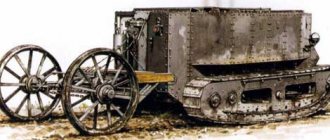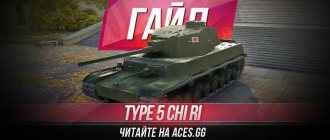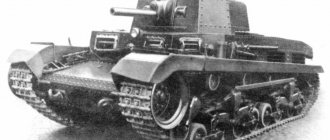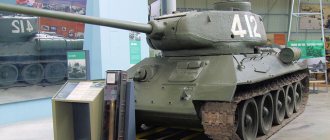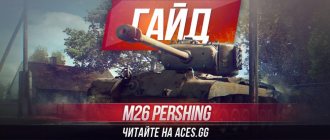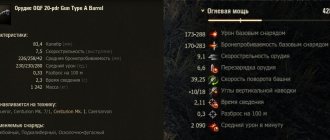M47 Patton II: inside the American hybrid
After World War II, the United States began to develop a series of combat vehicles that were supposed to replace the equipment in service. The M4 Sherman tanks were already outdated by that time, so they were gradually replaced by the M26 and M46. However, these machines also used wartime technology, and not the advanced developments of the late 1940s. The three new models were to be the T41, T42 and T43. After some time, the T41 light tank became the M41 Walker Bulldog, and the T43, after some delays, became the M103 heavy tank. Development of the T42 paused briefly with the outbreak of the Korean War, but the US command decided to take the turret from the T42 and place it on a modified M46 hull. This is how the M47 Patton II was born. After some testing, it was approved and put into production. A total of 8,576 vehicles were built from July 1951 to November 1953.
The upper frontal plate of the M47 hull, 102 mm thick, is tilted at 60 degrees. The armored cap that was on the M46 was removed, but the front-mounted machine gun remained. There is also 102 mm armor in the forehead of the turret, but it is located at an angle of 40 degrees. In the front part, behind protective grilles, there are lighting fixtures of various types. Here you can also see cargo loops, fastenings for a tow rope and periscopes in the hatches of the driver and his assistant.
To access the track tensioning mechanism, you need to lift the wing, which is held on hinges (according to the instructions, you need to screw it on additionally). To adjust the tension, you need to unscrew the clamping nut and move the sloth forward or backward.
The car's suspension is a little unusual. The torsion bar levers of the first and second rollers are located nearby, but the first one is installed against the direction of travel. The designers added a hinge between the track roller and the idler, which made it possible to reduce the length of the hull and maintain the desired angle between the track and the overhang of the hull. Shock absorbers are installed on the first, second, penultimate and last rollers. Sloths are also equipped with them.
The Patton tracks were either the T80E6 model with metal pads, or the T84E1 model with rubber pads. These are two-finger tracks with a traditional connecting bar at the end and a tapered retaining bolt. A total of 86 tracks with a width of 41 cm on each side.
At the rear of the vehicle you can see reverse signals, cargo loops, and a box with a telephone for the infantry. Under the box there are hatches giving access to the transmission and brake system. At the very bottom there are fastenings for the tow rope and a king pin for the trailer.
The armored rangefinder heads, also known as “frog eyes,” are easy to spot on the turret. On the sides there are handrails for infantrymen who rode on armor, but more often they hung duffel bags and bags with equipment on them. There are also many drawers along the sides for storing property. Usually sets of entrenching tools and repair kits were stored there in case of damage to the track.
In the Patton's engine compartment is a Continental AV-1790-5B, a 29.4 liter carburetor engine. In addition, an additional 13.6 hp engine was installed on the tank. It was used to operate various tank systems when the power of the main engine was not required. This technology saved fuel and eliminated unnecessary noise. On the left side of the engine there is an oil tank filler neck with a dipstick. Also in the engine compartment there is a transmission, 4 12-volt batteries and 2 cooling system fans.
For more details about the tank, as well as the internal structure of the M47 Patton II, watch the video from Wargaming.
Deployment[edit]
M47 Patton tank at Fort Meade, Maryland.
After the US Army in Germany was equipped with the M47, the first M47s delivered under the Mutual Security Agency program were delivered to Portugal in 1952. In October, the agency announced that NATO countries had agreed to accept the British Centurion main battle tank and tank. M47 as standard. [9] By October at Camp Drum in July, the New Jersey Army National Guard became the first Reserve to train in the tank. [10]
The Marine Corps also began fielding the M47 beginning in late 1952; After the Korean War, all seven Marine tank battalions, three divisional, two reserve training and two Army units fielded the M47. But they were soon replaced by the M48A1 Pattons and M103 heavy tanks, and the last M47s were withdrawn from service in 1959.[11]
Production of American locomotives was stopped in October due to a strike in the ammunition and locomotive departments. Production resumed in February when union leaders agreed to a wage increase. [12] In December 1952, the Department of Defense ordered a reduction in production of the M47 and M48 tanks. [13] In November 1953, American Locomotive stopped production of the M47 after operators discovered drive gear defects in Europe. [14] Army officials quickly admitted that the problem arose from their own expedient decision to use lower grades of steel to avoid wartime shortages. [15] Chrysler laid off approximately 1,000 workers from Detroit Tank Arsenal when production shut down in November. [16] American Locomotive resumed production in November. [17] The company closed its tank division in June 1954. [18]
With the introduction of the improved M48 Patton in 1953, the M47 was declared a "limited standard" in 1955, and tank examples were soon replaced by the M48 series. [5] (P47) After being declared obsolete in 1957, M46s and M47s were retained in the active shooter duty division of a combat assault pistol platoon (four tanks each, one platoon per combat, for a total of 20 tanks per division) until until replaced by the light truck anti-tank guided missile SS-10 in the early 1960s. [19] M47s were used by the reserves for a relatively short time, soon being replaced by early production M48 Patton tanks; thus, most of the M47s were exported in the late 1950s. [5] (p. 47) [20] (pp. 6,12–38,44–45)
The M47 was widely used by many countries, especially NATO and SEATO allies, including Austria (147), Belgium (784), Ethiopia (30), France (856), Greece (396), Portugal (161), [21] the US and West Germany), Iran (about 400), Italy (2480), Japan (1 for estimation only), Jordan (49), Pakistan (100), Portugal (161), Saudi Arabia (23 from the US, 108 from the international market) , Somalia (25 from Saudi Arabia), South Korea (531), Sudan (17 from Saudi Arabia), Spain (389), Switzerland (2 to estimate), Turkey (1,347 from US and West Germany), West Germany (1,120) , and Yugoslavia (319). [20] Like the US Army at the time, the West German Bundeswehr also used some of their M47s as intermediate tank destroyers/assault guns until they were replaced in the early 1960s by the Raketenjagdpanzer 1 tank destroyers armed with SS-11 anti-tank guided missiles. . [22]
The remaining US Army M47s in storage were used as targets. In the 1970s, they were used for the M60A1's 105mm gun with devastating effect. The 105-mm cumulative projectile easily penetrated the frontal armor. Many M47s in brand new condition met their fate in this manner, demonstrating first-hand to M60 crews the impact of modern tank armament on conventional steel armor.
Options [edit]
- M46E1
- pilot model, M46 hull with T42 turret, equipped with 90 mm M36 cannon, was longer to include a radio, fan and stereoscopic rangefinder; only one built [5] (pp. 41,43) - M47
- main production version, M46 body redesigned with modified lining, track return rollers reduced from five to three on board, longer mufflers on rear fenders; 8,576 built [5] (p41) - M47M
A product of an improvement program begun in the late 1960s, the M47M featured different engine and fire control components from the M60A1. The driver's assistant position was eliminated in favor of additional 90 mm ammunition. Not used in the USA; More than 800 cars were produced for Iran and Pakistan [5] (pages 41,43,45) - M47E
- Spanish strict version of the M47M (original control system retained). - M47E1
- Second Spanish upgraded batch with
modified
main gun ammunition storage and crew heater Both new and upgraded M47Es. 330 converted. - M47E2
- 45
pieces
. M47E1 with a 105 mm Rh-105 cannon and an improved fire control system (still electromechanical). Passive night vision for the driver and commander. All M47 series MBTs in Spanish service have been decommissioned since 1993. - M47ER3
- Spanish armored recovery vehicle. 22 built. - The Sabalan
is an Iranian upgraded version of the US M47M, featuring side skirts and a newly built turret equipped with a 105mm cannon, laser rangefinder, new fire control system and communications equipment. [26] [27] Never used in active service. [28]
Optional equipment
- M6
- Bulldozer for earthmoving work. Bulldozer kit for M47 series. - Unknown name - Replacement of the 90mm M36 with the 90mm M41 used by the M48 Patton III.
Combat service[edit]
A destroyed M47 Patton in Somaliland, crashed during the Somali Civil War.
A captured Pakistani M47 Patton from the Battle of Asal Uttar near the village of Bhikiwind in the Khemkaran district where the battle took place on September 10, 1965. Today it is on display in Bangalore as shown here.
- Near the end of the Korean War, several M47s were sent for field testing. Some of them had 18-inch floodlights. [1] (page 63)
- Pakistan fielded the M47 against India in both the 1965 Indo-Pakistan War and the 1971 Indo-Pakistan War.
- Jordan used the M47 against Israel in the 1967 Six-Day War.
- The M47 was used by the Turkish Army during the Turkish invasion of Cyprus between July and August 1974, with approximately 200 Patton tanks involved in combat. At least one operational M47, serial number 092273, was captured by the Cypriot National Guard and remained in service until 1993. This example is currently kept at Camp 25 in Paphos for use as a training and war memorial exhibit. . [23]
- During the Ogaden War, the Somalis used T-54 and T-55 tanks to destroy Ethiopian M41 and M47 tanks. [24]
- Iran sent its M47s to fight Iraq in the Iran-Iraq War between 1980 and 1988. Iranian M47s were roughly equivalent to the T-54 and almost as good as the T-55, but performed very poorly against much more powerful Iraqi tanks such as the T-62s and T-72s. By the end of the war, large numbers of M47 Patton tanks were captured by Iraq. [25]
- In the 1980s and until the early 1990s, the Turkish army used M47 tanks against PKK guerrillas in Turkey and neighboring Iraq. Turkish M48A5 variants replaced all remaining M47s by the late 1990s.
- Croatia used M47s against their Serbian enemies in the Croatian War of Independence, but their performance was regarded as inferior to the Soviet-designed T-55. M47s were withdrawn from service immediately after the war and are now used as artillery and missile targets for live-fire exercises during military exercises.
- During the Somali Civil War, part of the country's large collection of M47s (obtained before the war) may have been used during the initial stages of the internal conflict, but these aging vehicles soon ceased service (and were left abandoned and/or destroyed) due to lack of spare parts and proper maintenance of the Somali army.
- France deployed a squadron of its M47s against Egypt during the Suez Crisis in 1956.
Notes and links
- (c) "AMERICAN LOCOMOTIVE COMPANY, SCHENECTADY, SCHENECTADY COUNTY, NEW YORK, USA", on Preserved Tanks (consulted September 13, 2014).
- (c) Christopher F. Foss, Jane's Armored Fighting Vehicle, London, Book Club Fellow, 1976, 437 pp., pp. 108-111
- "Medium Tank Platoon" (consulted December 21, 2016)
- (c) "TM9-718a", on archive.org (consulted December 21, 2016)
- (f) "Caro de Combate M47e1" (consulted December 21, 2016)
- (from) "Der Kampfpanzer M47 Patton", on Tank Group (consulted 21 December 2016)
- Pascal Deschenes, "M47 PATTON", on Belgoarmor (consulted March 30, 2022).
- (f) "M-47 Patton Fighting Vehicle", on Ejercito Mide (consulted December 21, 2016)
- "1950 CHAR M 47 PATTON", on French tanks online (consulted September 13, 2014).
- "M47 Patton", at the Engineering Museum (consulted December 21, 2016)
- (c) R. P. Hunnicutt, Patton: The History of the American Main Battle Tank, Echo Point Books and Media, 2015, 468 pp. (ISBN 9781626541597, read online), pp. 75

